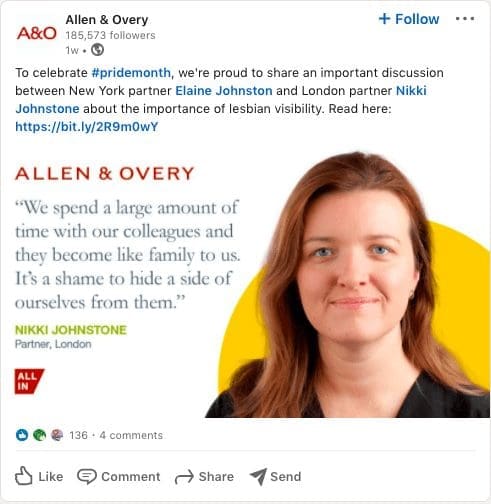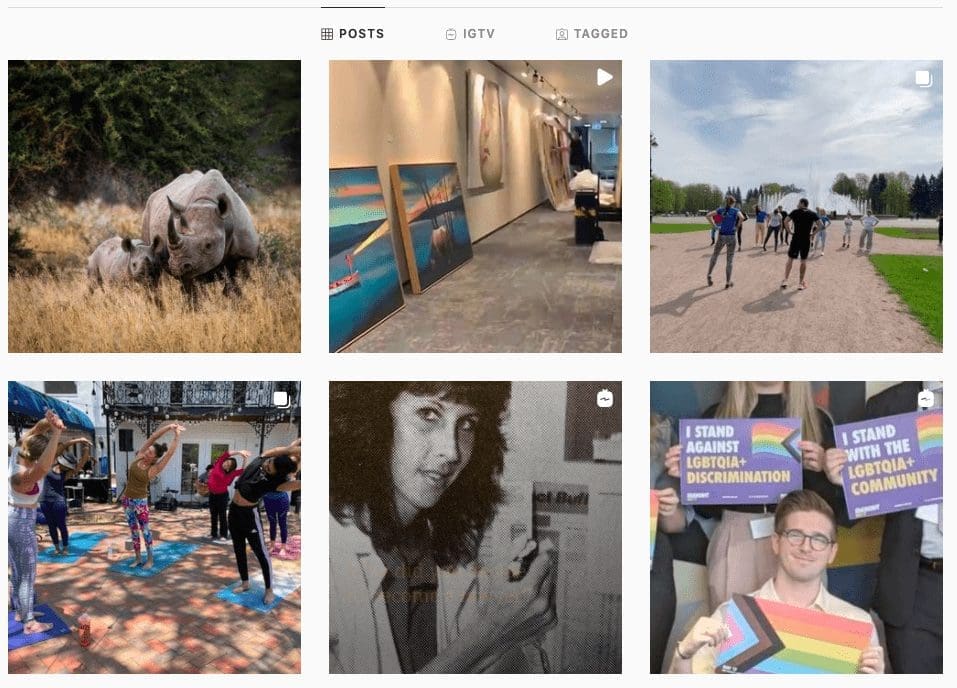The traditional view of social media for law firms is that they are a one-way content marketing tool. Promotional messaging dominated the timeline. Adoption rates were high as firms rushed to catch up to other professional service industries.
However, this ignored the whole crux of social media. To be social and engage users. To form channels of communication. The trend is now swinging back the other way.
Increasingly, social media for law firms is about more than just a brand name. It’s a great way to demonstrate company culture, success stories, corporate social responsibility and much more.
It has operational benefits too. The firms that are nailing social media are finding access to the market much easier. Consequently, presence on social media platforms is not something law firms should ignore.
Social Media for Law Firms: Quality over Quantity
It’s worth noting that social media for law firms can’t simply just consist of having a page on a platform. Visibility is always the first step. However, it is irrelevant unless further action is taken to promote your presence. It’s also worth noting that some firms are choosing to step back from Facebook after the Cambridge Analytica data scandal.
Social media for law firms is about quality, not quantity. Above all, you should be able to justify all activity as being part of either long-term brand strategy, or short-to-medium term client funnelling and acquisition.
These are some of the law firms currently nailing the four main social media platforms.
Allen and Overy
Allen and Overy often come top for ranking social media for law firms. It’s no surprise to see why. Their content is fresh, engaging and updated regularly. They share relevant legal updates and correspondence which their followers and subscribers will find interesting.
More importantly though, they use the platforms for open communication. Frequently, you’ll see posts about corporate social responsibility, award nominations and winners and also positive company culture. It marks their brand out as being extremely credible, but also an excellent employer.
Their LinkedIn is especially strong in this regard. The ‘This is Allens’ series allows lawyers and attorneys to tell their own employment stories in their own words. Frequently, there is a focus on amplifying the voices of minority, LGBTQ+ and other previously underrepresented communities.
Perhaps their strongest asset is knowing that less is more. They don’t just post content for the sake of it. That means that when they do post, people want to listen, engage and be involved.
Finally, although they don’t post as much on the platform, Allens have a very good YouTube channel. They have chosen to focus on quality detailed legal content, aimed towards a more specialist audience, and also recruitment-related content. As a lot of younger people tend to use YouTube as their primary social media channel, this means that they put themselves directly in the view of their target demographic.

DLA Piper
DLA Piper are a muti-national law firm with a clear identity and big following. On Facebook, they have almost 15,000 followers, whilst they have over 40,000 on Twitter. However, the most unique aspect of their digital strategy, when exploring social media for law firms, is the work on their Instagram account.
When it comes to social media for law firms, Instagram is often the hardest marketing channel to crack. There is a perception that B2B companies have no place on Instagram. The image-based style of marketing is viewed as too fluffy, or not serious enough. DLA Piper have taken those ideas and subverted them brilliantly.
The DLA Piper Instagram account, which boasts almost 10,000 followers is a blend of storytelling, brand identity, and legal information. The tone of voice manages to be informative and authoritative, whilst remaining friendly and personal. The biggest compliment that can be paid to the activity – it feels genuine. Gone are stock images and logos in every single post. Instead, you get a mixture of their own photography, carefully choreographed edited images and even some more off-the-wall content.
Considering that DLA Piper are such a large and well-established firm, it would be very easy for their messaging to get diluted or lost on Instagram. Often, smaller law firms excel more on Instagram because of the more personal nature of the platform. However, since DLA Piper have fully embraced and acknowledged that crucial aspect, they have succeeded in transcending that gap.

Baker McKenzie
When it comes to using Twitter and Facebook in a more traditional sense, Baker McKenzie fit the bill well. With over 77 offices and 6,000 lawyers worldwide, they can rightly claim to be one of the biggest law firms in terms of employees and also in terms of revenue.
They are also one of the strongest companies when it comes to social media for law firms. Although they aren’t the biggest account on the platform, they are experts at using their Twitter and Facebook accounts to function as an in-house press-room. Whenever there is a big piece of news, a brand announcement, a new partner or a merger & acquisition, you will see it referenced. They are very good at blending detailed informative posts – particularly on Facebook – with a shorter infographic or text-based image that summarises the key news. This means that people just scrolling through still get the headline information about the brand. Every piece also always links to a more detailed article or press release.
The use of clear, crisp imagery and eye-catching colours, as well as legible white text helps carve out a strong brand identity. What’s more, Baker McKenzie’s content on LinkedIn focuses on key brand updates, legal changes and corporate social responsibility, intermittent with strong recruitment messaging.
It helps to foster a culture of expertise and understanding. They are also very good at getting engagements and interactions on their content, and they frequently reply in-depth to these messages on LinkedIn and on Twitter to build relationships.

White & Case LLP
As explained in the introduction, some law firms are turning away from using Facebook to promote themselves. Whilst it is true that the Cambridge Analytica scandal has turned some people towards other platforms, Facebook is still the biggest social media out there and it also is the most recognisable. Every law firm should probably have a presence there – even if it is just to be a standard business page.
For White & Case LLP, their Facebook page is less about the legal and more about the human aspect of their brand. They are extremely good at telling stories about their social activity, client stories and employees. The use of grayscale imagery when exploring their internal activity, as opposed to full-colour content discussing canon law or legal updates gives the brand an almost regal sense of authority, authenticity and respect. They also engage in supporting important religious, social or community events with bespoke posts, imagery and messaging at the right time.
Like so many of the other brands on this list, White & Case LLP also set the standard for social media for law firms by ensuring that every single post – whilst being informative – does also leave the user wanting to find out more. A judicious selection of relevant hashtags as well as a custom shortened link to their website within every post makes it quick and easy for social media users to investigate further if they are inclined.

Social Media for Law Firms: The Final Word
One thing all of these brands have in common with each other? They have a clear tone of voice and defined identity. Although the content that they share is markedly different, all of these brands are very strong on social media.
The biggest takeaway from law firms here is not simply to copy what these firms are doing. Instead, you should adapt and make it your own. Like Allen & Overy, embrace the power of LinkedIn for storytelling and knowing what to post and when, and more importantly, when not to post. Use DLA Piper as inspiration for creating that unique Instagram identity and avoid the cliche of law being stuffy, boring, complex and colourless.
Take the example from Baker McKenzie: ensure all of your posts have a clear, crisp identity using the correct colour palette and always linking to more detailed coverage. Finally, reflect on the choices of White & Case LLP for using social media for the purpose of being social – telling stories about your team and your brand and also fostering a sense of community by referencing religious and socio-political matters.
There is not a single ‘right way’ to do social media for law firms. By taking inspiration from the best around, you can make social media work for your firm, regardless of your size.




